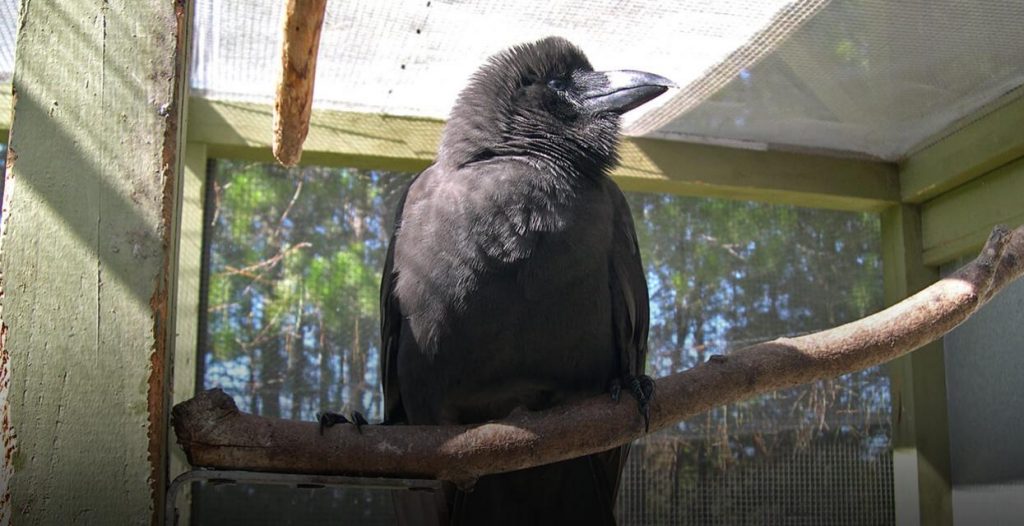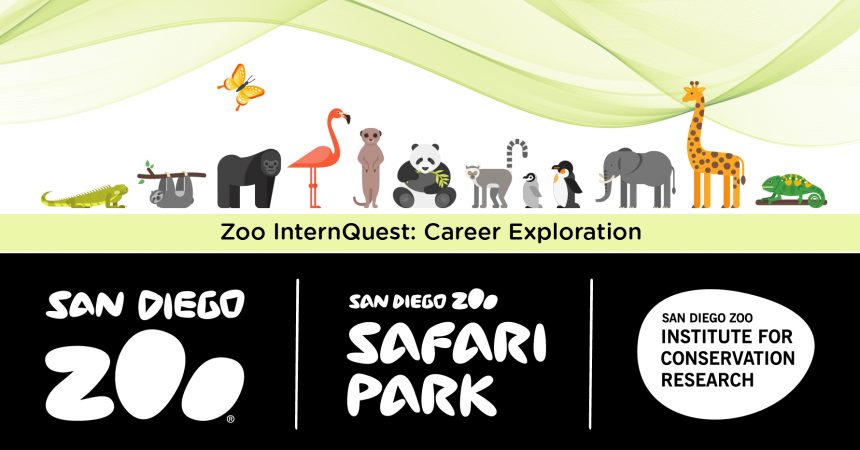Zoo InternQuest is a seven-week career exploration program for San Diego County high school juniors and seniors. Students have the unique opportunity to meet professionals working for the San Diego Zoo, Safari Park, and Institute for Conservation Research, learn about their jobs, and then blog about their experience online. Follow their adventures here on the Zoo’s website!
 Have you ever experienced Common Core Math, the new teaching system where students are no longer given formulas, but guided to find them on their own? At the Zoo, all animals undergo “Common Core Survival”. Similar to using critical thinking skills to learn mathematical concepts, animals must perform certain behaviors that they normally would in the wild in order to get their proper food and shelter.
Have you ever experienced Common Core Math, the new teaching system where students are no longer given formulas, but guided to find them on their own? At the Zoo, all animals undergo “Common Core Survival”. Similar to using critical thinking skills to learn mathematical concepts, animals must perform certain behaviors that they normally would in the wild in order to get their proper food and shelter.
To learn more about this method, we met with Jessica Sheftel, an Animal Welfare Specialist with a background in primatology who works with a wide variety of animals at the San Diego Zoo and Safari Park. During our visit, Ms. Sheftel explained how enrichment at the Zoo has been evolving over the past five to eight years. Enrichment is giving animal’s the necessary resources for survival, but through various methods. For instance, rather than simply giving an animal a bowl of food, it is Ms. Sheftel’s job to find ways to give them what they need, while also promoting natural behaviors. Since the animals at the Zoo are used to relying on a keeper’s care, giving them new circumstances and opportunities that encourage their natural behaviors creates an environment that is more similar to what they would encounter in the wild. Ms. Sheftel’s ultimate goal is for the animal to be healthy and representative of their wild counterparts through cognitive and physical stimulation.
Like math students, animals need to cultivate their critical thinking skills. With the help of engineers, exhibit designers, and volunteers, new toys are made that challenge an animal’s cognitive abilities. Some animals are given puzzles to solve in which the animal will have exercised their brain and received a food reward upon completion. Similar to students, animals start with simple activities and gradually work up to more complex activities that require the layering of previously acquired skills. This is called cognitive layering, where the skills acquired by completing each activity slowly build on each other. Think of it this way, before learning exponents, you first had to learn multiplication, and before multiplication, you had to learn addition. Likewise, the gradual stacking of concepts allows the animal to progress through enrichment puzzles and feel continually challenged.
Although math students may not be getting much of a physical workout during their homework assignments, the animals at the San Diego Zoo certainly are. Since some animals living in managed care don’t have the opportunity to hunt or move like they would in the wild, they must keep up with their physical strength by engaging in activities implemented by welfare specialists, like Ms. Sheftel. The polar bears, for example, are sometimes fed meat dangling from a pole. By giving the polar bear opportunities to reach for their meat, Ms. Sheftel is ensuring that certain muscles are being used.
The cultivation of cognitive and physical abilities keeps the Zoo’s animals healthy and happy. For animals that will be released back into the wild, these activities are even more important. Successful enrichment practices will help make sure the animals are capable of living on their own when they are reintroduced into their natural environment. For instance, before the alala crow was reintroduced, Ms. Sheftel and her colleagues needed to make sure that the bird was capable of hunting on its own. If Ms. Sheftel was not able to properly train that behavior, the bird’s chances of survival would have been very slim and the reintroduction program would have failed.
Furthermore, to increase chances of survival in reintroduction, welfare specialists observe the animal’s behavior by collecting behavioral data. Although many believe behaviors can only be recorded subjectively, there is an objective method as well. Similar to how Jane Goodall recorded chimpanzee behavior, this process includes: constructing a research question, defining certain behaviors, recording on scheduled time intervals, and taking scientifically based samples. This method allows data to be analyzed and adapted into activities that can spur an animal’s cognitive and physical growth.
A common misconception about zoos and animals living in managed care is the confusion between welfare and animal rights. Even though an animal’s exhibit can never fully simulate an animal’s natural environment, welfare specialists like Ms. Sheftel work to ensure they are healthy in their current surroundings. Similar to Common Core math students who gain critical thinking skills that can be applied to the real world, the animals at the Zoo live in enriching environments that allow them to express behaviors as they would in the wild.
Nerissa, Real World Team
Week Five, Fall Session 2018


